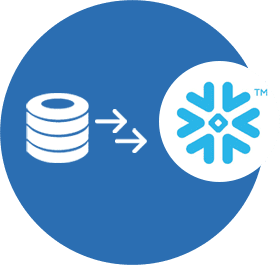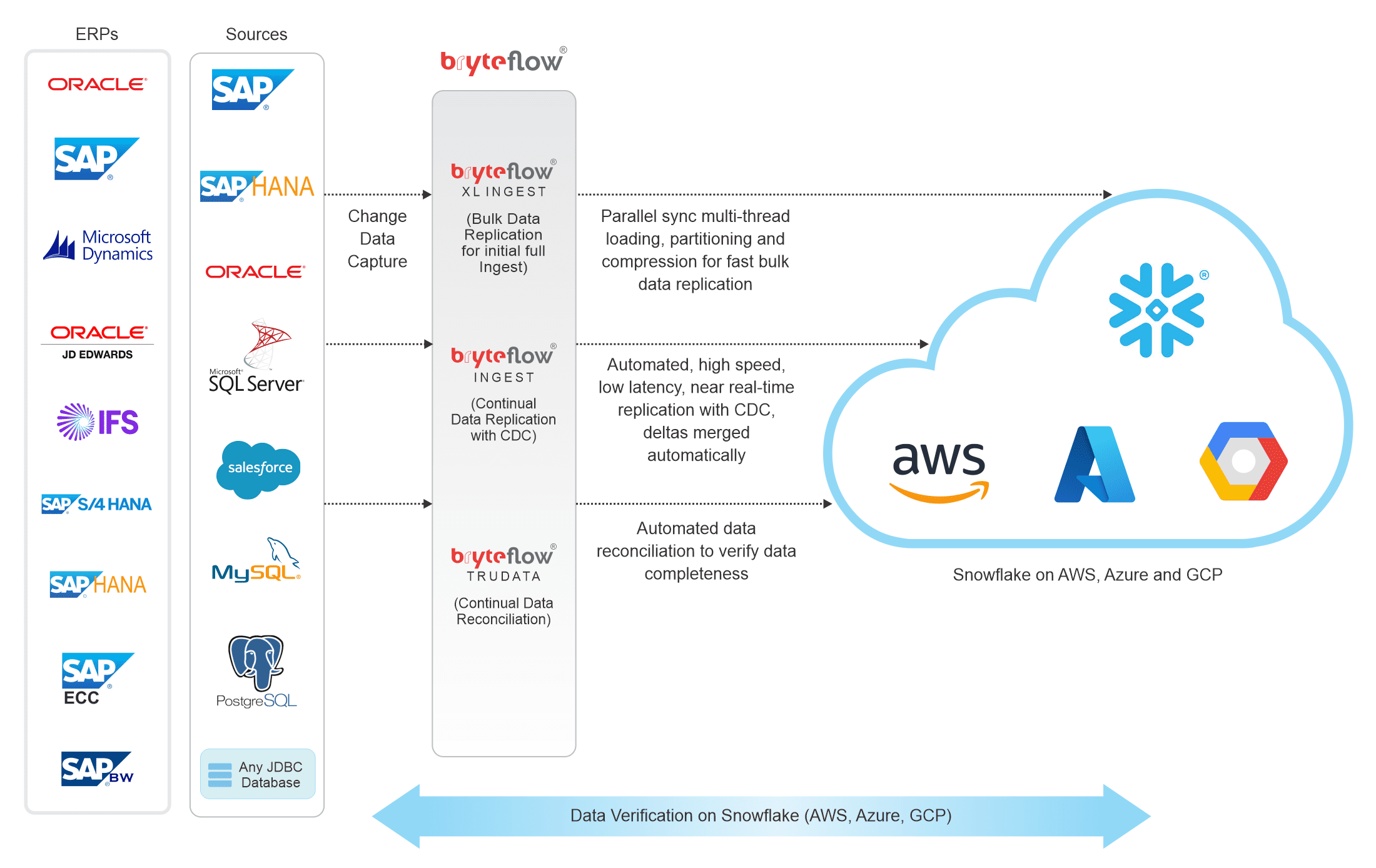Get SQL Server data to Snowflake
Automated SQL Server to Snowflake Migration with BryteFlow
If you have to migrate SQL Server data or load SQL Server data to Snowflake, you may be pondering about which SQL Server replication tool to use. BryteFlow is a no-code replication tool that can migrate your SQL Server data to Snowflake in real-time. Whether you have a single SQL database or multiple, multi-tenant SQL databases, BryteFlow migrates your SQL data to Snowflake, refreshing it continually with log-based CDC (Change Data Capture). BryteFlow also creates tables automatically on Snowflake so you can avoid tedious data prepping and access ready to use data for analytics or ML. Automated data reconciliation also verifies data for completeness. The Easy Way to CDC from Multi-Tenant Databases
Learn about BryteFlow for SQL Server
Learn about SQL Server CDC (Change Data Capture)
Learn about SQL Server CT (Change Tracking)
Highlights of our SQL Server to Snowflake Replication Tool
- Replicates data in real-time to the destination using log-based SQL Server CDC or SQL Server CT or a combination of both.
- BryteFlow Ingest provides a range of data type conversions out-of-the-box.
- BryteFlow data replication uses very low compute so you can easily cut Snowflake data costs.
- No coding for any process, including data extraction, merging, masking, or type 2 history.
- No external integration required with third party tools like Apache Hudi
- Automated replication tool with an easy point-and-click interface. About Snowflake Stages
- Migrates single tenant and multi-tenant databases to Snowflake easily Snowflake CDC With Streams and a Better CDC Method
- Maintains a history of every transaction with SCD Type2 history (if configured).
- Bulk loads data easily with parallel multi-thread loading, smart partitioning, and compression.
- Provides Automated Data Reconciliation to verify data completeness.
How to load terabytes of data to Snowflake fast
SQL Server to Snowflake – in 4 easy steps
Transform your data with Snowflake ETL
Real-time, codeless, automated SQL Server data replication to Snowflake

Can your replication tool replicate really, really large volumes of SQL Server data to your Snowflake database fast?
When your data tables are true Godzillas, including SQL Server data, most data replication software roll over and die. Not BryteFlow. It tackles terabytes of data for SQL Server replication head-on. BryteFlow XL Ingest has been specially created to replicate huge SQL data to Snowflake at super-fast speeds.

How much time do your Database Administrators need to spend on managing the replication?
You need to work out how much time your DBAs will need to spend on the solution, in managing backups, managing dependencies until the changes have been processed, in configuring full backups and then work out the true Total Cost of Ownership (TCO) of the solution. The replication user in most of these replication scenarios needs to have the highest sysadmin privileges.
With BryteFlow, it is “set and forget”. There is no involvement from the DBAs required on a continual basis, hence the TCO is much lower. Further, you do not need sysadmin privileges for the replication user.
An Alternative to Matillion and Fivetran for SQL Server to Snowflake Migration
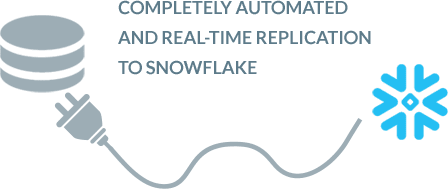
Are you sure SQL Server replication to Snowflake and transformation are completely automated?
This is a big one. Most SQL Server data tools will set up connectors and pipelines to stream your SQL Server data to Snowflake but there is usually coding involved at some point for e.g. to merge data for basic SQL Server CDC. With BryteFlow you never face any of those annoyances. SQL Server data replication, data merges, SCD Type2 history, data transformation and data reconciliation are all automated and self-service with a point and click interface that ordinary business users can use with ease.
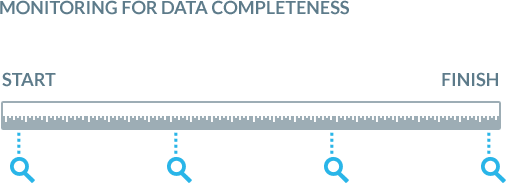
Is your data from SQL Server to Snowflake monitored for data completeness from start to finish?
BryteFlow provides end-to-end monitoring of data. Reliability is our strong focus as the success of the analytics projects depends on this reliability. Unlike other software which set up connectors and pipelines to SQL Server source applications and stream your data without checking the data accuracy or completeness, BryteFlow makes it a point to track your data. For e.g. if you are replicating SQL Server data to Snowflake at 2pm on Thursday, Nov. 2019, all the changes that happened till that point will be replicated to the Snowflake database, latest change last so the data will be replicated with all inserts, deletes and changes present at source at that point in time.
Snowflake CDC With Streams and a Better CDC Method
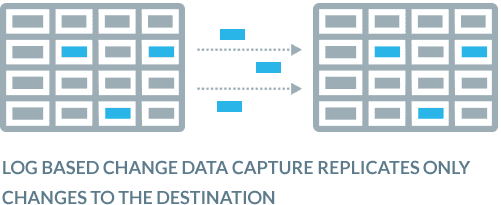
Does your data integration software use time-consuming ETL or efficient SQL Server CDC to replicate changes?
Very often software depends on a full refresh to update destination data with changes at source. This is time consuming and affects source systems negatively, impacting productivity and performance. BryteFlow uses SQL Server CDC to Snowflake or SQL Server Change Tracking which is zero impact and uses database transaction logs to query SQL Server data at source and copies only the changes into the Snowflake database. The data in the Snowflake data warehouse is updated in real-time or at a frequency of your choice. Log based SQL Server CDC is absolutely the fastest, most efficient way to replicate your SQL Server data to Snowflake.

Does your data maintain Referential Integrity?
With BryteFlow you can maintain the referential integrity of your data when replicating SQL Server data to Snowflake. What does this mean? Simply put, it means when there are changes in the SQL Server source and when those changes are replicated to the destination (Snowflake) you can put your finger exactly on the date, the time and the values that changed at the columnar level.
Here’s Why You Need Snowflake Stages (Internal & External)

Is your data continually reconciled in the Snowflake cloud data warehouse?
With BryteFlow, data in the Snowflake cloud data warehouse is validated against data in the SQL Server replication database continually or you can choose a frequency for this to happen. It performs point-in-time data completeness checks for complete datasets including type-2. It compares row counts and columns checksum in the SQL Server replication database and Snowflake data at a very granular level.Very few data integration software provide this feature.

Do you have the option to archive data while preserving SCD Type 2 history?
BryteFlow does. It provides time-stamped data and the versioning feature allows you to retrieve data from any point on the timeline. This versioning feature is a ‘must have’ for historical and predictive trend analysis.

Can your data get automatic catch-up from network dropout?
If there is a power outage or network failure will you need to start the SQL Server data replication to Snowflake process over again? Yes, with most software but not with BryteFlow. You can simply pick up where you left off – automatically.
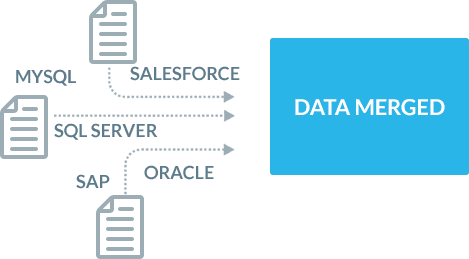
Can your SQL Server data be merged with data from other sources?
With BryteFlow you can merge any kind of data from multiple sources with your data from SQL Server for Analytics or Machine Learning.
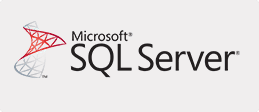
About Microsoft SQL Server
Microsoft SQL Server is a software that is a relational database management system owned by Microsoft. It’s primary objective is to store data and then retrieve it when other applications request it. It supports a huge range of applications including transaction processing, analytics and business intelligence. The SQL Server is a database server that implements SQL (Structured Query Language) and there are many versions of SQL Server, engineered for different workloads and demands.
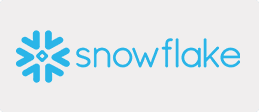
About Snowflake Data Warehouse
The Snowflake Data Warehouse or Snowflake as it is popularly known is a cloud based data warehouse that is extremely scalable and high performance. It is a SaaS(Software as a Service) solution based on ANSI SQL with a unique architecture. Snowflake’s architecture uses a hybrid of traditional shared-disk and shared-nothing architectures. Users can get to creating tables and start querying them with a minimum of preliminary administration.

